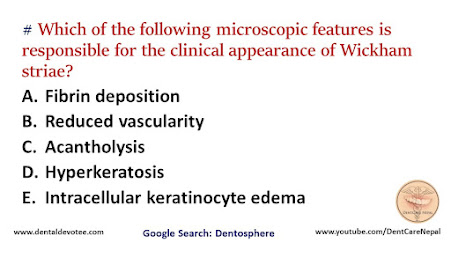# Which of the following microscopic features is responsible for the clinical appearance of Wickham striae?
A. Fibrin deposition
B. Reduced vascularity
C. Acantholysis
D. Hyperkeratosis
E. Intracellular keratinocyte edema
The correct answer is D. Hyperkeratosis.
Several types of lichen planus within the oral cavity have been described. The most common type is the reticular form, which is characterized by numerous interlacing white keratotic lines or striae (so-called Wickham’s striae) that produce an annular or lacy pattern. The buccal mucosa is the site most commonly involved.






